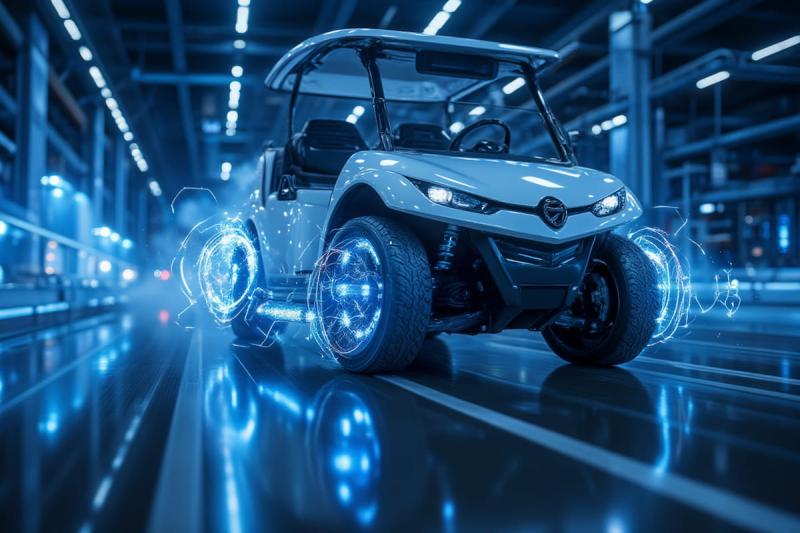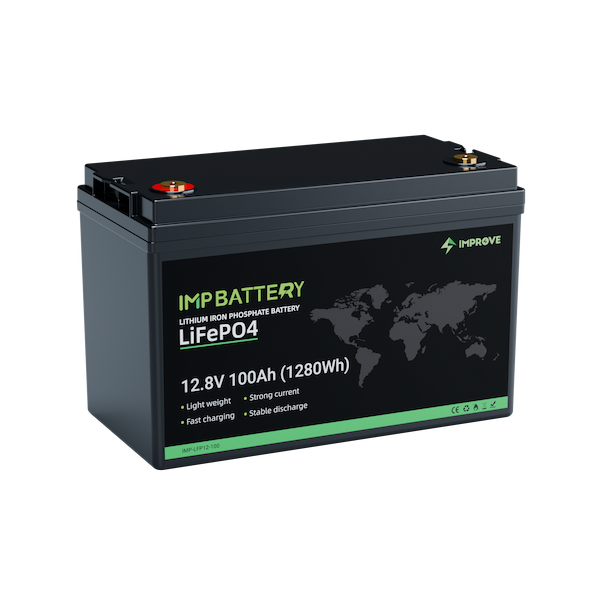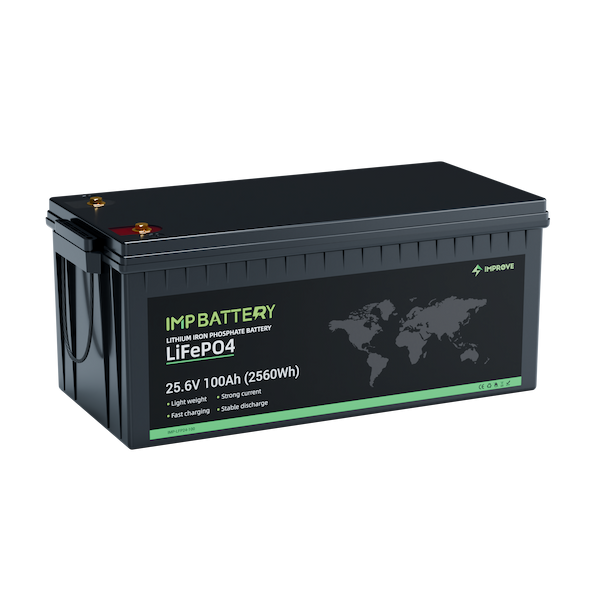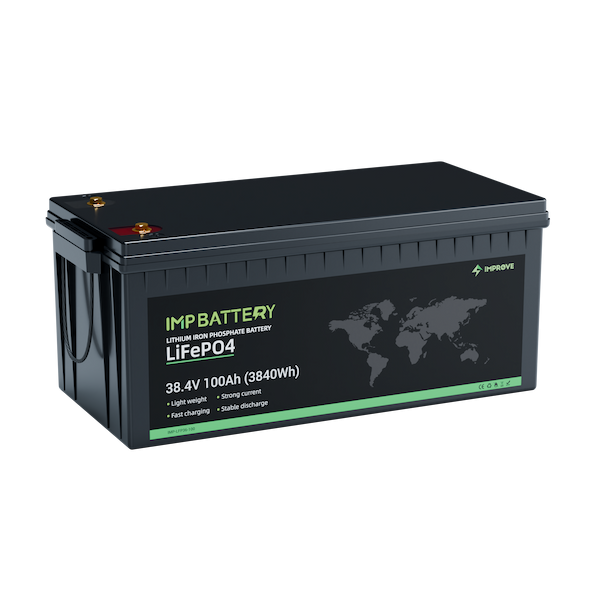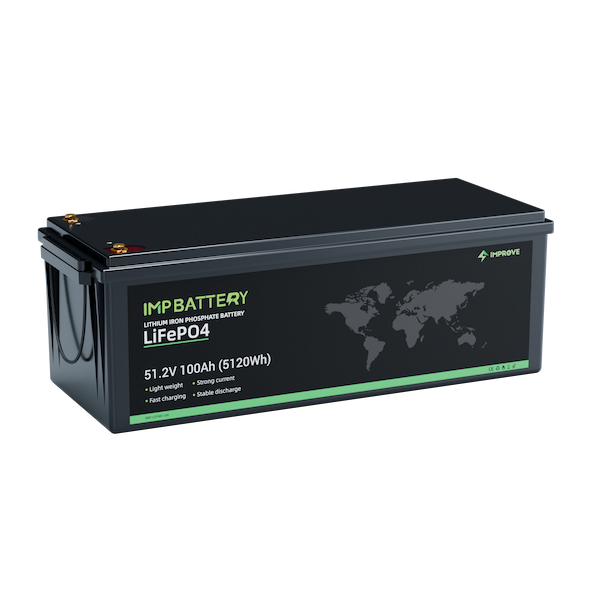If you’ve been thinking about a Lithium LiFePO4 Battery, but were unsure, I’m hoping to provide some clarity on them and what you should think about before you buy. IMPROVE Battery As a LiFePO4 Manufacturer, are very willing to share with you about how to choose.
Functionality
Lithium batteries offer improved functionality over their AGM and flooded alternatives in that they can be discharged to a higher level safely than their counterparts, providing more actual usable Amps.
Most AGM battery manufacturers will not recommend discharging the battery below 50%, because the heat produced when charging them back up can damage the cells and plates, and even warp the batteries, which can significantly reduce the life of the battery.
Conversely, Lithium batteries can be safely discharged to a 100% Depth Of Discharge (DOD) (@10.5v), which provides more usable amps vs. a maximum 50% DOD for an AGM to maintain its cycle life.
You can also anticipate 10x the cycle life compared to an AGM battery. A Lithium LiFePO4 battery cycled to 50% DOD can achieve 5,000 cycles vs. 500 cycles for an AGM battery. This means that it is achievable for most users to obtain 10-12 years of life with a good quality Lithium LiFePO4 Battery vs. 3-5 years with a good quality AGM.
Cost
Lithium LiFePO4 batteries cost more than AGM batteries to manufacture, and the price of Lithium LiFePO4 is not coming down. As Lithium LiFePO4 is an Ore product and traded on the stock market along side gold, platinum and silver, all manufacturers will pay the market price. Essentially this means that the amount and quality used in batteries and the internals directly affects the production cost of the battery. We are talking about things like the cell quality and rating, internal Battery Management System, and the actual usable capacity the battery has. Unfortunately, most of these variables can only be evaluated after purchasing the battery, which makes choosing the right one very important, but also very difficult.
To better understand comparative costings, I’ve focused costings here on a 100AH capacity (as sold). Lithium LiFePO4 batteries at this capacity range in price from about $600.00 to about $1900.00. AGM batteries of a similar size range from about $200.00 – $600.00. So, a top-quality Lithium LiFePO4 battery will cost you about 3-4 times the price of an equivalent AGM.
Size
This is where Lithium LiFePO4 batteries come into their own. An equivalent (usable capacity) Lithium LiFePO4 battery will take up ½ of the physical space of an AGM battery, which is great if you want to hide it somewhere. Or alternatively, get double the power for the same space.
Comparing a Revolution Lithium LiFePO4 battery to an AGM (100Ah)
Lithium LiFePO4 100Ah (100 Ah usable) – 305x165x215mm .
Lithium LiFePO4 60Ah Slimline (60AH usable) – 291x106x223 mm
AGM 100Ah (50Ah usable) – 307x169x210mm
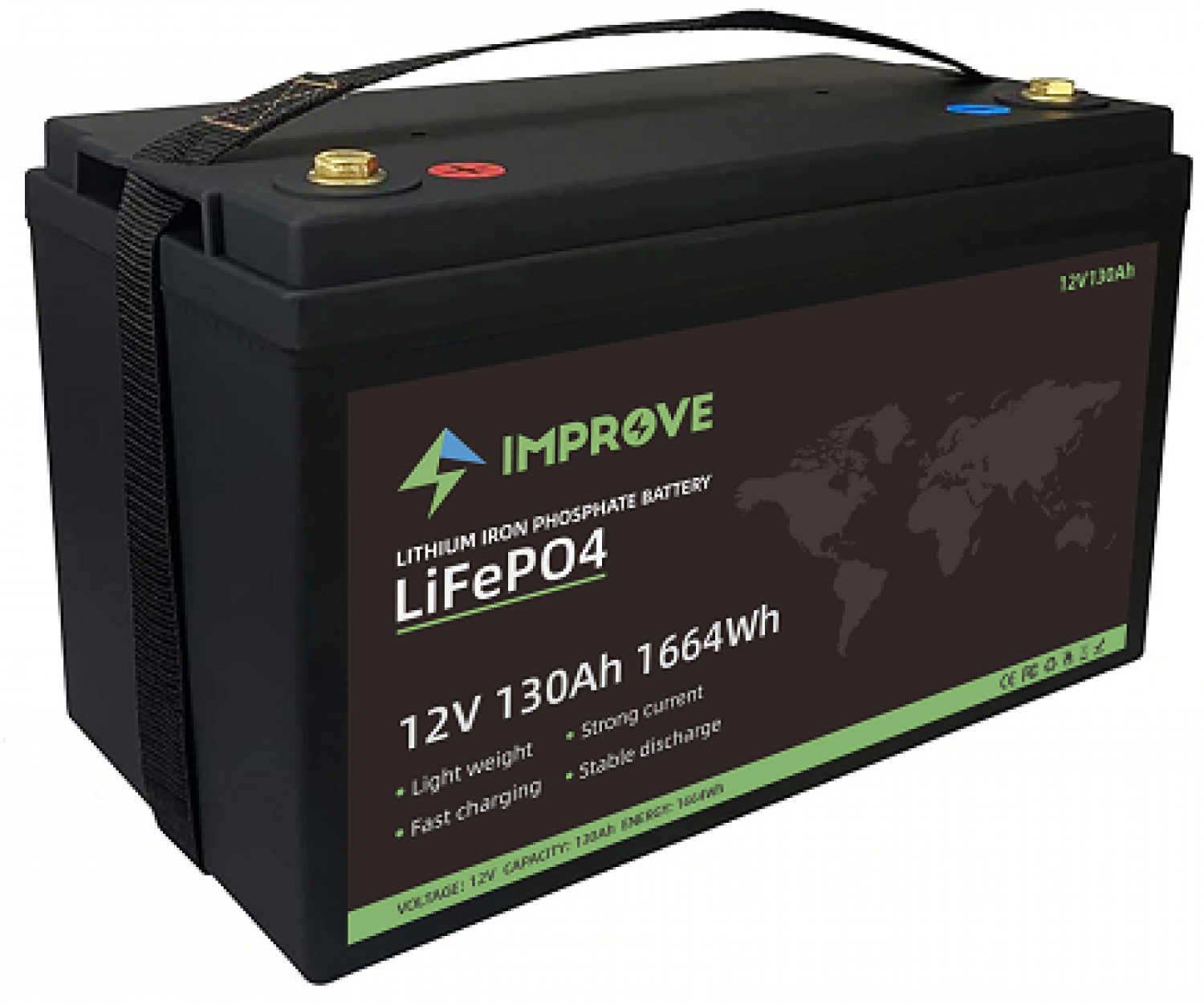
Weight
Another big plus when it comes to Lithium LiFePO4 is the weight saving. A 105 Ah AGM battery will weigh approximately 28KG vs. 7.7KG for a 60Ah Lithium LiFePO4 Battery, which both have very similar usable capacities. Similarly, a 165Ah AGM will weigh 53.6 KG, where a 100Ah Lithium LiFePO4 (with more usable power) weighs 12.8KG.
Even if you replaced a 105AH AGM with a 100AH Lithium LiFePO4 , you would save 16KG of weight, and get double the usable capacity. If you replaced a 165AH AGM with a 100AH Lithium LiFePO4, you’d save 40KG of weight, and still gain almost 20% in usable capacity.
Quick Re-charge
Aside from the weight savings, Lithium LiFePO4 batteries also have significantly quicker re-charge vs. AGM batteries. The low resistance in the Lithium LiFePO4 cells allow the battery to accept the full output from the charger. With a 30 Amp charger, a 100Ah Lithium LiFePO4 battery can be fully charged from flat to full in just over 3 hours vs. 10+ for a 100Ah AGM battery. This is a huge advantage with solar in that every amp that your solar panels produce are going directly into the battery.
Important Considerations before you buy
While in the long run, Lithium LiFePO4 batteries outdo AGM batteries in pretty much every way (including whole of life cost), they are an investment up front, and there are a few more things you need to consider before you buy one.
Not all Lithium LiFePO4 Batteries are the same
If you go online, you’ll see over $1,000.00 difference in price between some Lithium LiFePO4 batteries that are claiming to be equivalent, based on the AH capacity. While it is immediately tempting to go for the cheaper option, you need to do a little more homework before you buy. There are several videos going around demonstrating EBAY batteries labeled as 135Ah batteries only having 49Ah capacity to 10.5v, so you need to be diligent with your research.
Below are few more key things you need to consider when choosing between Lithium LiFePO4 options.
C-Value
The C-rate is a measure of the charge/discharge rate of a battery over the period of 1 hour. For a 100Ah LiFePO4 battery a 1C rating means that you can draw 100amps continuously for 60 minutes. For a 0.5C 100Ah battery, you can draw 50amps from the battery in an hour safely, and a 0.2C 100ah battery 20amps for 60 minutes.
A 1C battery isn’t necessarily better than a .5C battery, it just has different parameters, which limit the battery’s capability/usage and the BMS’ (internal battery management system) specifications for maximum continuous discharge.
To not stress the cells and achieve the longest cycle life for the battery, a 1C rated cell x 100Ah battery should contain a 100A continuous draw BMS. A 0.5C cell x 100Ah battery should contain a 50A continuous draw BMS. This means that the 100AH capacity can only be drawn safely over 2 hours for a .5C cell and that the maximum draw you can place safely on the battery is 50A.
They key in relation to the C value here is to make sure that your hourly current draw won’t exceed the max discharge rate of the battery you choose. If it does, you can damage the battery, and it likely won’t be covered by any warranty because you’ve chosen to use it in a manner that exceeds the manufacturers specifications.
BMS mismatch
they have seen some batteries on the market use a BMS (this is the batterys’ internal management system) designed to take up to 100A, but cells in the battery are only 0.5C, which means they are only designed for a 50A BMS. This means that the battery is stressing the cells to deliver the current, which will result in reduced performance and life over time.
Apparently, the only way to tell whether the BMS is matched to the rating of the cells in the battery is to check the output voltage of the charged battery with a Multi-meter, and then apply the maximum load stated by the battery manufacturer. Start with 50A, and the voltage should stay constant. Up the draw to 100A and then see if the voltage drops. If it stays the same, the BMS is matched to the cells. If it drops, then you’ve got a mismatch.
Charging
Lithium LiFePO4 batteries need to be charged by a charger that has a Lithium LiFePO4 charging profile. So, if you have an older system, you’ll need to check with the manufacturer whether they have a Lithium LiFePO4 profile, or otherwise you’ll need to change your in-vehicle charger to be able to use it. This is critical because you don’t want to ruin the battery by not charging it properly or get a reduction in performance from such an expensive battery.
Know your realistic current draw
Before you buy a battery, whether Lithium LiFePO4 or not, you probably need to consider your maximum current draw, based on all the things you could actually run off the system. A 100AH 1C battery can run a 1000W invertor (divide wattage by 10 to get the amps required to run the invertor) using 1000W of power. But if using the 1000W load on the invertor, you are putting the maximum load on your battery, so if you are running anything else concurrently, then you’ll need bigger batteries. If you don’t forecast your current draw properly, your battery may appear to handle the higher draw, but in reality you will cook the cells of the battery as it struggles to safely deliver the power required, and this may mean you kill your battery much sooner than you should.
Summary
Lithium LiFePO4 batteries stack up on all fronts, as long as you match the capacity of the battery to your needs, and can spare the upfront investment required. There is no need to throw your existing batteries out just yet, but perhaps it is worth putting a few extra $ away for when the current ones give up the ghost. It will last longer, weigh less, and give you more output than other types.
If you have a question, or would like more information, check out IMPROVE website at www.improvecn.com, or email to them.



